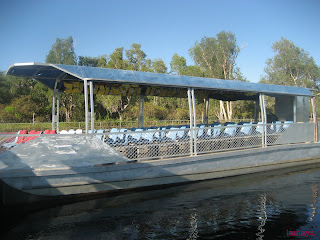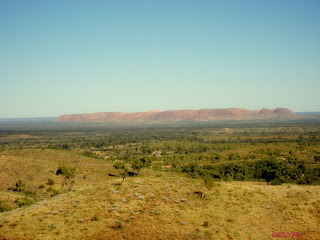It isn't everyday that your partner comes home and announces that he is in the interview process for a job overseas, but it could happen. Seven years ago it happened to me. Within 5 days of walking through the door and making his announcement Mark was offered a job he couldn't refuse--an opportunity to work in his field in sunny Southern Spain. I'll admit that we weren't exactly living in dreary England, and it wasn't the weather that made the job offer appealing. No, it was the fact that my partner had been dreaming of returning to Spain after my year long teacher exchange (an experience I refused to repeat).
Of course I had no problem with the idea of a year or two abroad, especially if I didn't have to work. However, there was a hitch and the visa being offered to Mark was not valid for domestic partners. It didn't matter that we had been together for years, that we were in a committed relationship, or that we owned a house together. In order for me to legally accompany Mark we need the "simple" paper that showed we were husband and wife. We never really sat down and discussed it, and there was no formal proposal; but as we stood in Kinkos faxing his signed contract we knew what had to happen. We didn't spend hours on end making wedding plans--Mark was too busy preparing to leave the country in under six weeks.
One of the most important days of my life was planned by me and my best friends. The Girls were with me for every step of the way--date, announcement party, venue, guests, reception, and ring selection. They went so far as to make the flower and cake arrangements without my input and I could not have done a better job. Both my bouquet and cake brought tears of joy to my eyes.
We began the planning with a brainstorming session that took us from a drive through wedding in Vegas to a simple ceremony at our home. We decided on keeping the pending marriage a secret until the announcement was made at our annual Christmas Tree decorating party. (You may want to note that our our yearly tree was far from traditional and consisted of a hollowed out cactus adorned with over 500 white lights and a hundred colorful hand crafted mexican tin decorations.) The sparking sight would provide the back drop for our vows.
Our small and simple ceremony occurred on Tuesday after Thanksgiving, exactly 10 years after our first kiss and 4 days before Mark was to leave to Spain. We were joined by our Parents, and my 3 B.F.F.--each playing a key role: Bride's Maid, Best (wo)Man, and photographer. The event was presided over by one of Mark's ex-colleagues who just happened to be a Minister. I think he did the service more as an act of friendship than as a belief in our eternal love. Maybe we shouldn't have told him we had to get married for the visa. Also, it didn't help that as Mark slipped the silver band around my finger he declared it a symbol of his freedom (it should have been love). When the ceremony was over, and the Minister walked down the path with our gift of gratitude tucked under his arm (a dozen bottles of Spanish wine), I couldn't help but wonder if he was headed home to get drunk.
With papers signed, pictures taken, and Kalhua--which my paternal Grandmother had bought in Mexico for this vary occasion when I was 6 years old--was drunk we headed to a local restaurant to celebrate a union that was going to embark us on the adventure of a life time. This all occurred 7 years ago today.
















